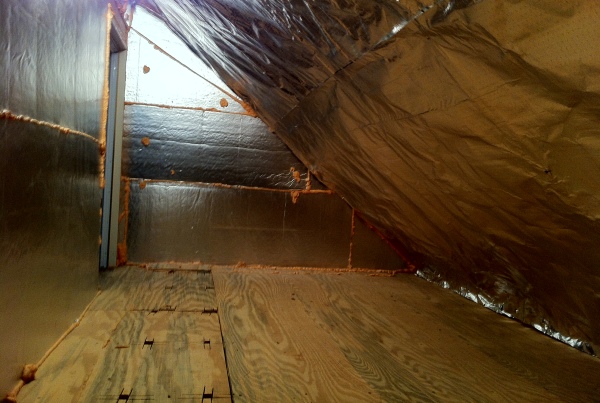| Feb 27, 2009 | Omaha World-Herald | |
|
Nancy Gaarder
Feb. 27, 2009 (McClatchy-Tribune Regional News delivered by Newstex) — Drafty old homes do more than let in cold air in the winter. They suck the life out of family budgets.
And now significantly more Nebraska and Iowa families will spend less to stay warm during winters and cool during the summer.
The reason? The federal government’s new stimulus plan. Though the amounts are not certain, about $120 million is expected to be pumped into the two states over the next two years for weatherizing homes. Iowa could receive about $81.5 million, and Nebraska could receive between $37 million and $43 million.
The money is from the $5 billion set aside for home weatherization in President Obama’s $787 billion American Recovery and Reinvestment Act.
The president’s weatherization plan dramatically loosens income guidelines to take in moderate-income, as well as low-income, families. Under the new guidelines, roughly 30 percent of the populations of the two states live in households that will qualify for weatherization assistance.
An estimated 1.3 million adults and children in Nebraska and Iowa live in households that meet the new income guidelines, according to Census calculations by the University of Nebraska at Omaha Center for Public Affairs Research. That’s a 50 percent increase over the previous income standard. A family of four earning $42,400 a year will be eligible, whereas the previous limit was $31,800.
Census data indicates that the change in income guidelines will draw in relatively more two-parent households with children and elderly age 75 and older, said Jerry Deichert of UNO’s Center for Public Affairs Research.
In Tuesday’s State of the Union speech, Obama touted his effort to make the nation’s homes and buildings more energy efficient as providing dual benefits: putting people to work and lowering energy bills.
But many conservatives insist weatherization doesn’t belong in the stimulus bill.
"Having the federal government pay for caulk and insulation may or may not be a sensible idea, but it will do little or nothing to create jobs in the short term, and it has no place in a bill designed to get our economy moving again," said Michael Steel, spokesman for House Republican leader John Boehner of Ohio.
The unprecedented funding increase also has some worried whether industry and government can meet the demand for equipment and trained personnel needed to weatherize the homes. Critics question whether enough jobs can be created quickly enough to help bolster the economy.
Weatherization dollars can pay for a variety of improvements, including adding insulation, sealing leaks and installing new furnaces and other energy-efficient appliances.
Another possibly $70 million is expected to be injected into Nebraska and Iowa under the Obama stimulus plan for a variety of other energy programs, some of which could benefit businesses and higher income homeowners. Those details are still being worked out.
The stimulus plan also includes a provision for consumer rebates on energy-efficient appliances.
Under the weatherization program, states will be able to spend more on each house. The Department of Energy limits the average amount that can be spent per house to about $3,000. Under this plan, that average will increase to $6,500.
Iowa families probably won’t see a boost in spending per home because that state packages a variety of funding sources and spends, on average, about $7,000 per home, according to the state Department of Human Rights.
In Nebraska, where the state spends an average of about $3,000 or $3,600 per house, depending upon the funding source, the additional money should have a noticeable impact. Depending upon how the federal government allows the money to be spent, Nebraska officials say more homes could get energy efficient appliances such as furnaces and heat pumps.
Nebraska typically does about 1,110 homes a year, Iowa about 2,000. Nebraska officials aren’t certain how many more homes they’ll be able to do. Iowa officials expect to see nearly a tripling in the homes they’ll be able to weatherize.
Officials in both states say even this dramatically increased funding won’t entirely solve the problem of leaky, drafty homes draining the incomes of low-income families. That’s because there wouldn’t be enough money to fix up homes if every eligible family applied.
"There are plenty of houses out there," said Pete Davis, weatherization and state energy program division chief for the Nebraska Energy Office.
In Nebraska alone, the state has weatherized about 62,000 homes over the past 30 years.
Homeowners who do get their homes weatherized see a noticeable change on their bills.
In Iowa, where more has been spent on each house, improvements have trimmed about 23 percent from energy bills, while in Nebraska, the average drop in utility bills has been about 20 percent.
In Iowa, that translates into an average savings of $450 a year on utility bills.
"When you don’t have much money to begin with, and you have to make choices between buying food and paying your utility bill, $500 does make a difference," said Jim Newton, bureau chief, weatherization program, Iowa Department of Human Rights. "And it’s not one time, it’s year after year." |
||




